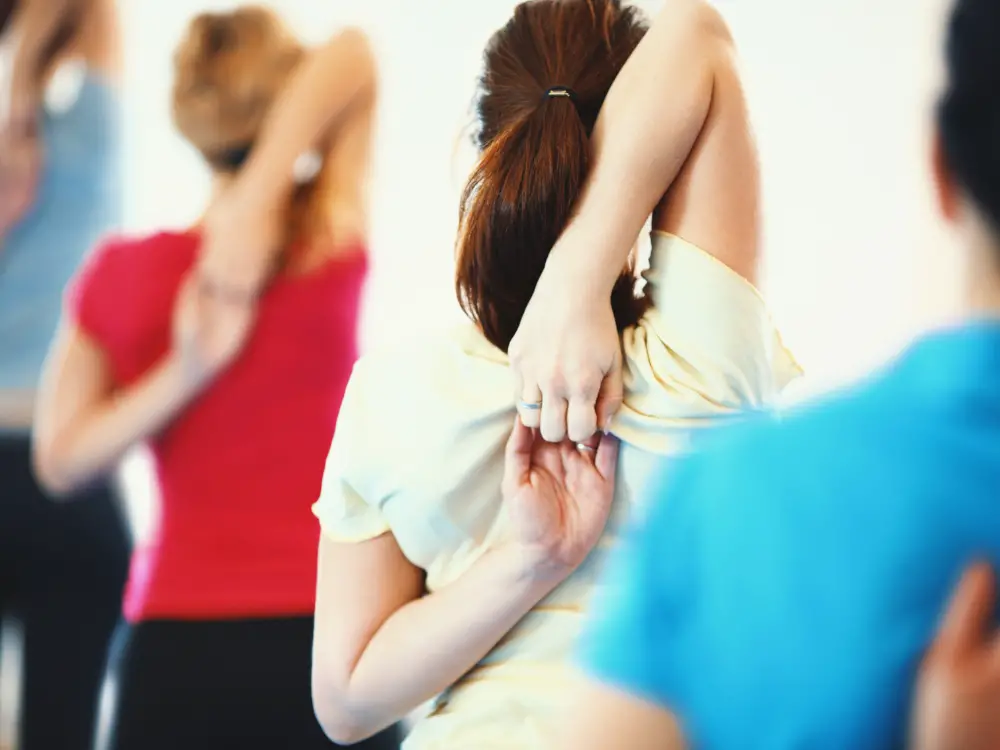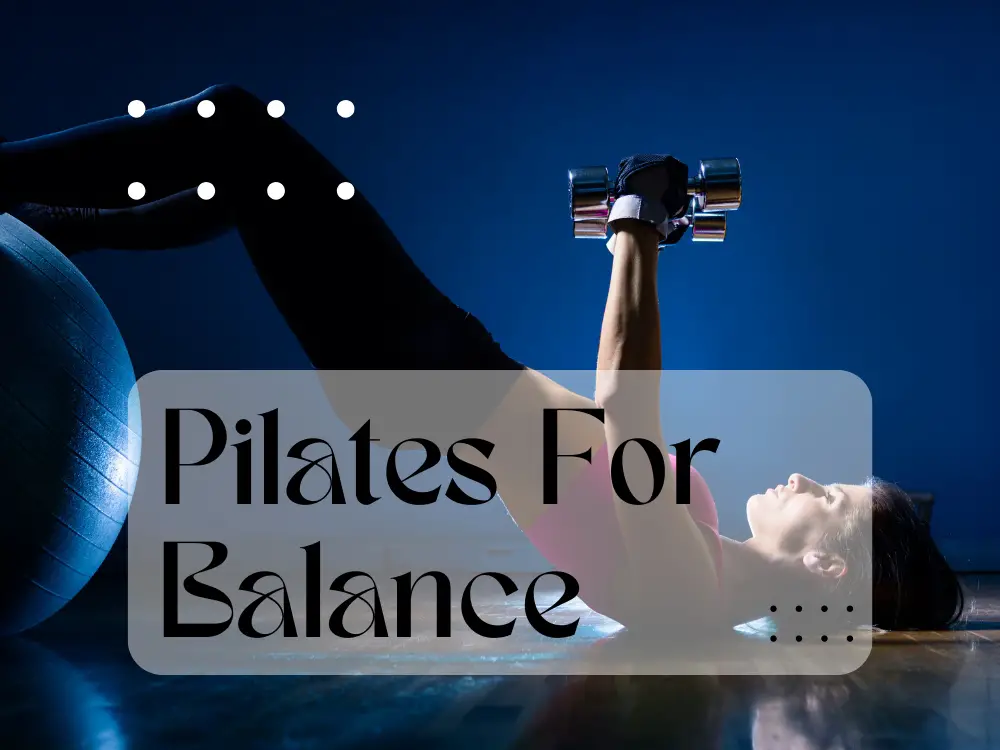Pilates is a popular exercise that emphasizes core strength, flexibility, and balance. It’s also an excellent way to improve overall physical and mental health.
In this article, we’ll discuss how Pilates can help with balance, what you can expect when doing it, and the benefits of incorporating it into your routine.
Pilates has grown in popularity over recent years due to its low-impact nature and focus on muscular control and body awareness. Many people find that regular practice of pilates helps them achieve better posture and increased coordination.
Additionally, since balancing exercises are included in many traditional Pilates routines, they can be extremely effective for improving stability and reducing the risk of falls or injuries.
By combining elements from yoga, dance, martial arts and gymnastics together with breathing techniques, pilates provides a well-rounded workout for all skill levels.
What Muscles Are Involved In Body Balance?
Balance is like a tightrope walker, dynamically balancing our body and mind as we go through life. It requires both physical strength and mental agility to master dynamic balance and keep ourselves centered.
Fortunately, there are exercises that can help us improve our balance by strengthening the muscles in our upper bodies, legs, and thighs, which all play an important role in maintaining balance.
Core strength is also essential for improving stability and overall coordination; working on these core muscles helps support your entire body while engaged in any activity or exercise that involves balance.
Balance exercises require focus and concentration, allowing us to become aware of how gravity affects our movements. As we practice more often with mindful awareness, we begin to notice subtle shifts within our posture, enabling us to move into better alignment and experience improved balance over time.
Is Pilates Good For Balance?
Pilates is an effective form of balance training and can be used to improve functional performance.
It helps build strength in the core muscles, which are essential for achieving good upright posture and overall balance confidence.
Pilates also focuses on engaging deep muscles that support the spine, pelvic floor, hip joint and shoulder girdle to help create a stable foundation before working on dynamic movements such as balance exercises.
In addition to improved stability and coordination, pilates-based exercises offer other benefits like increased flexibility and range of motion throughout the body.
Regular practice will help individuals develop better body awareness while improving their strength, agility, coordination and balance.
As a result, they may be able to perform activities with greater ease without sacrificing safety or comfort.
With all these advantages in mind, it’s no wonder why so many people turn to pilates for balance improvements.

What Effect Does Pilates Have On Body Balance?
Studies have shown that balance can decline throughout the life course, with a decrease in body posture and height as we age.
Pilates is designed to help improve your balance by strengthening core muscles which support everyday movement. Through its focus on form, breathing, coordinated movements and stretching, it helps to cultivate overall body awareness which leads to improved postural alignment and stability.
Additionally, consistent practice of pilates has been found to boost strength in the legs, hips and lower back – areas key for maintaining good balance control. The coordination involved with pilates exercises develops neuromuscular connections between brain and body so you’ll be able to move more effectively during daily activities such as walking up stairs or carrying groceries.
As well as improving body mechanics it builds confidence through developing enhanced kinesthetic awareness – allowing us to better anticipate our environment’s challenges.
Moving forward then, let’s take a look at which specific pilates exercises are best suited for helping us maintain our body balance?
Which Pilates Exercises Are Best For Balance?
Pilates is an excellent way to improve your balance, as it focuses on mindful movements and core strengthening. The primary focus of Pilates when used for balance is to keep the body in alignment while moving through a range of motions.
Here are 4 key exercises that can help you improve your balance with pilates:
1. Single Leg Circles
2. Swimming
3. Roll Up
4. Side Kicks
These exercises target all muscle groups and will help increase strength and stability throughout the entire body. Additionally, these exercises can be modified or intensified depending on individual needs and goals, making them ideal for any fitness level.
With consistent practice over time, you’ll notice improved control over your posture and increased coordination between your arms and legs – both essential components of good balance!
How Long Does It Take To Improve Your Balance With Pilates?
Pilates is a great way to improve balance. With regular practice, you can expect to see noticeable improvements in your balance within just a few weeks.
Pilates teaches the body how to move as one unit, which helps increase coordination and enhances proprioception – the ability of your brain to accurately interpret physical signals from your joints and muscles. This improved awareness will help you maintain better posture and be more stable when standing on one foot or performing other balancing exercises.
Using specific equipment such as the Reformer machine can give an added challenge that further strengthens core stability, increases muscular endurance, and improves overall balance. The goal with these machines is to teach proper form while challenging your body’s abilities at the same time.
By learning correct technique through consistent practice, you’ll become stronger and steadier on your feet in no time!
With all this said, it’s clear that pilates is an effective tool for improving balance — but which one is better for balance: yoga or pilates?

Which One Is Better For Balance Yoga Or Pilates?
Have you ever wondered which type of exercise is better for improving balance – yoga or pilates?
Both offer a variety of benefits, but they each have their own strengths and weaknesses.
**Pilates** – Strengthens the core muscles that are important for maintaining good posture and stability. Improves flexibility in the spine and hips, helping with coordination and agility.
**Yoga** – Helps increase strength and endurance by engaging multiple muscle groups at once. Enhances focus through breathing exercises that can improve concentration and reduce stress levels.
No matter what your fitness goals may be, either practice can provide an effective way to improve balance while getting fit. Pilates focuses on strengthening specific areas of the body, while yoga offers a more holistic approach that works all major muscles simultaneously. Depending on your needs and preferences, either could be a great choice!
Conclusion
Pilates is a great way to improve your balance. It works all the muscles involved in body balance and helps you become more aware of yourself and how each part of your body moves together. With consistent practice, it can take as little as 4 weeks for one to start feeling an improvement in their overall balance.
Furthermore, when compared with yoga, both have some overlap but Pilates is better suited for those looking to directly work on improving their postural stability and coordination.
I personally find that practicing Pilates has helped me gain control over my posture and improved my ability to stay balanced even through sudden or unexpected movements. I feel like this has allowed me to be more agile and confident while moving around no matter what activity I’m engaged in.
Overall, if you’re looking for something specifically tailored towards strengthening your balance then Pilates should definitely be at the top of your list. Not only does it help strengthen certain muscle groups but also teaches proper form which will help prevent injury down the line.
So don’t wait any longer – get started with your own Pilates routine today!


